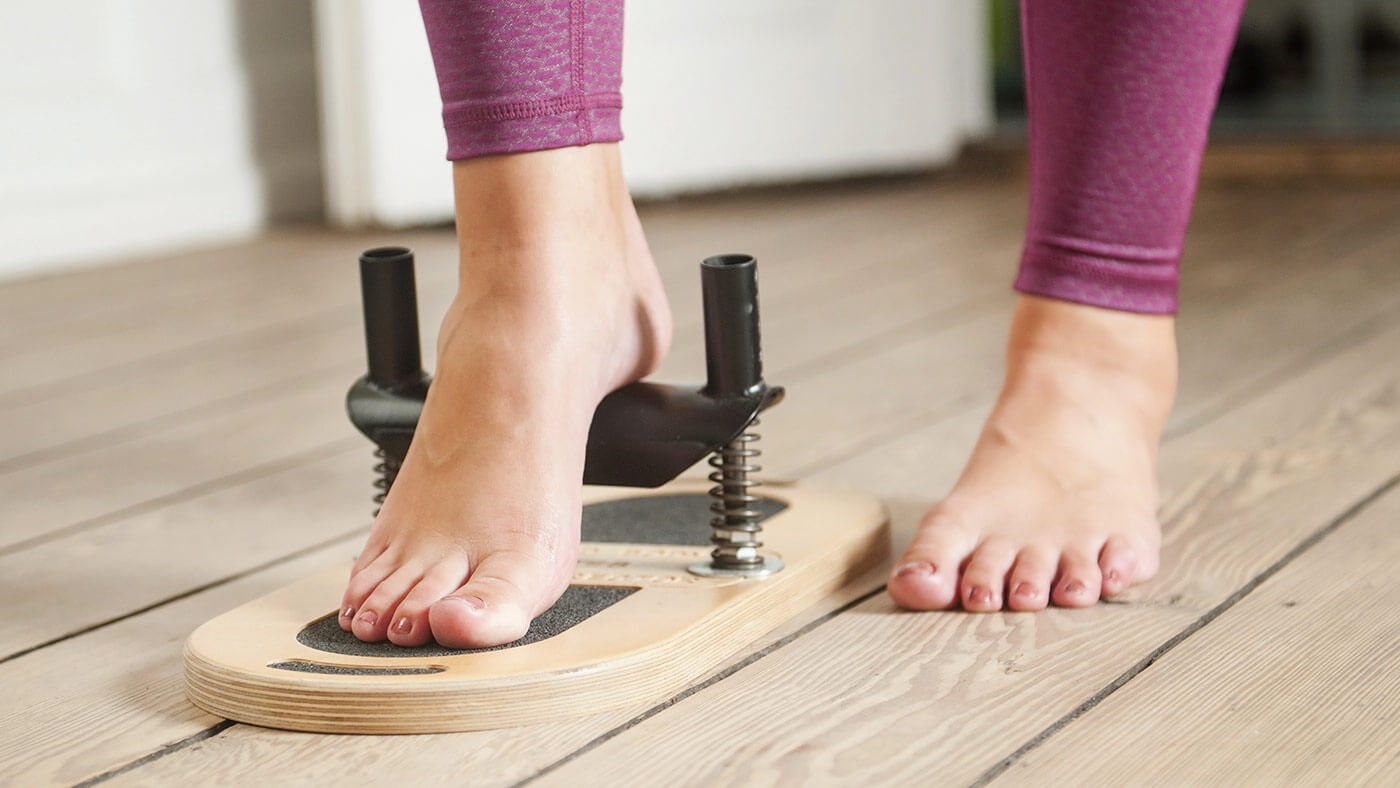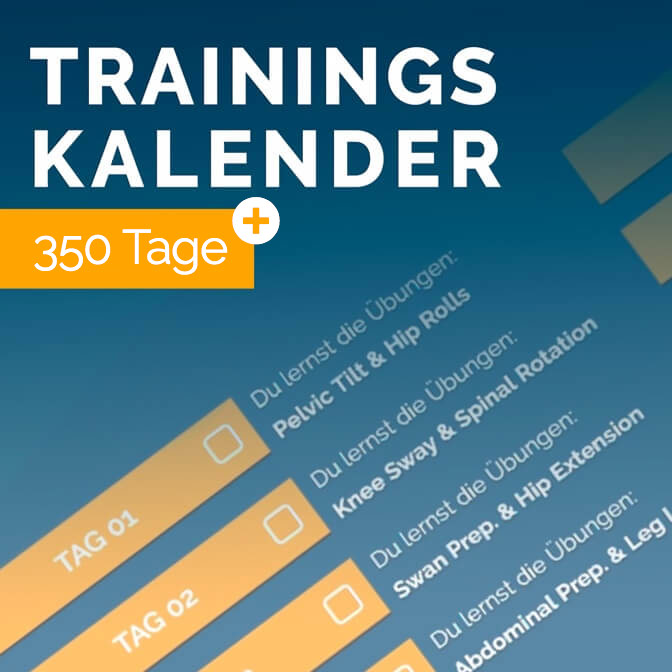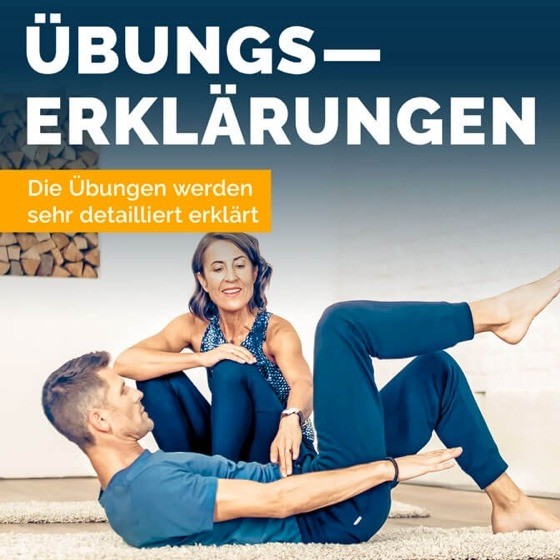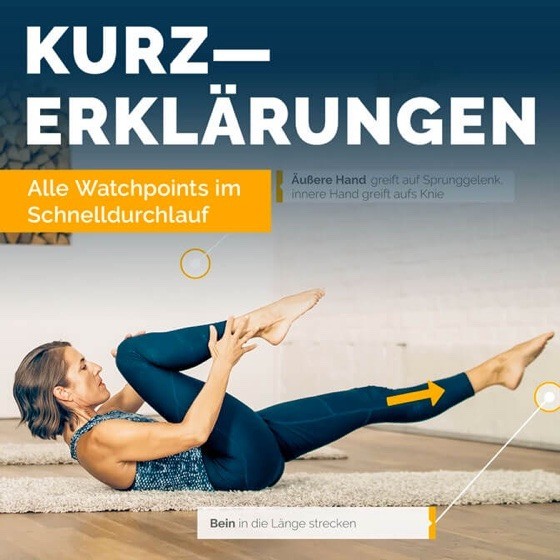
Pilates technique explained
Why it is important to exercise feet and ankles
What do our feet have to do with Pilates?
July 11, 2022, by Maria Felsner
I, too, was allowed to experience how quickly the muscle and fascia structure breaks down, especially after an injury, but can be efficiently rebuilt.
But not only injuries, also flat or fallen feet, hallux valgus, splayed feet etc. can be corrected with targeted training.
Exercises for our feet
According to scientific studies, foot problems affect about 35 % of older adults. This can significantly accelerate or increase the aging process and also the risk of falls. Collateral damage to the body, such as knee or hip pain, is often the result of weak foot muscles.
See: Journal of the American Podiatric Medical Association [March 2018],
https://japmaonline.org/view/journals/apms/108/2/15-186.xml
For me, there are many reasons why I regularly include exercises for our feet in the program. Only through specific mobilization, stretching, strengthening and stabilization exercises can we prevent injuries and prevent collateral damage to the body.
We also stimulate blood circulation via massage and sensitize neuromuscular connections.
Other benefits include:
- Improve mobility throughout the body
- Promoting balance
- Cancellation of the dysfunction, which may affect other parts of the body.
- Improvement of the gait pattern
- Fall prevention
Before I get into the tips, I want to take you into a little digression about the anatomy of the feet.
The anatomy of the foot
With approx. 28 Bones, 33 Joints, 20 muscles, numerous Tendons and Ribbons our feet are a true artistic framework and form the strong foundation of our body.
Our foot skeleton acts on a, in relation to the body, small space, is very complex and at the same time filigree.

Forefoot - Midfoot - Tarsus
In the literature as well as on the Internet, one can find many approaches to the anatomy and function of the feet. For our use, I will try to present the anatomy of the feet somewhat simplified.
In anatomy, the foot is divided into:
- the forefoot - antetarsus,
- the metatarsus and
- the tarsus - tarsus.
Our feet are connected to our body or legs by the ankle joint - articulatio talocruralis - which consists of two parts:
the upper and lower ankle joint.
The upper ankle joint connects the foot with...
- the shinbone - tibia,
- the fibula - fibula,
- the talus - the talus.
The function of the upper ankle is to move the foot into dorsiflexion and plantarflexion, up and down. In Pilates, we usually say point and flex when we explicitly extend or draw the feet in.
The lower ankle joint is supported by...
- the calcaneus - Os Calcaneus
- the talus ÷ os talus,
- and with the bones of the tarsal
formed. (Os stands for bone.)
The lower ankle joint allows less mobility than the upper one. It rotates inward and outward and also allows a slight lateral tilt. The outward rotation of the foot is called pronation, and the inward rotation is called supination.
The metatarsus can be easily palpated by us laymen. It represents the connection between the forefoot and the hindfoot and serves as the bony structure of the arch of the foot.
In the forefoot alone there are a total of 14 toe bones, connected with small joints. They have a similar property as our hands and fingers, respectively.
Tendons
The tendons perform a very important task in relation to all movements in the foot. They have the function of balancing the tension relationship of the muscles to the bones, as they serve as a link between muscles and bones.
The best known tendon on the foot is the Achilles tendon, which pulls over the heel bone, where in turn the plantar fascia (Aponeurosis plantaris) has its origin. The plantar fascia then continues along the longitudinal arch of the foot and splits into five trains in the midfoot region.
The plantar fascia is always an exciting tendon plate for me. Exciting because it literally maintains the tension of the filigree bony foot structures, cushions the body weight when walking and running, and also has an important function in bounce.
For us, this means that this tendon plate must be constantly challenged in its function. If we neglect this region, this can also be a main reason for painful inflammation. This inflammation is called plantar fasciitis, is.
Often this pain extends from the heel bone to the metatarsophalangeal joints of the toes. In some cases, a heel spur is responsible for plantar fasciitis or vice versa.
TIP: If pain occurs in this area, it should be clarified as soon as possible. In most cases, those affected react too late. Then healing can drag on for months.
Ligamentous apparatus of the foot
The most important ligaments are the external, internal and syndesmosis ligaments. These are most commonly affected in sports injuries. In all three sections of the ankle joint, the ligamentous apparatus plays an essential role in stabilizing and guiding the joint and, in the best case, is constantly tense.

Foot muscles
In short, different muscles of the foot perform various tasks.
The muscles on the sole of the foot, planta pedis and arch of the foot are responsible for flexion of the toes. Those on the dorsum of the foot are responsible for extension.
The short foot muscles are specifically responsible for actively bracing the longitudinal arch. Both arches, longitudinal and transverse, are created by the pull of ligaments, tendons and muscles.
If this mechanism between tension and relaxation does not function properly, this can lead to gross changes in foot statics, which, as already mentioned, can cause further damage to the body.

"The goal of Pilates is to have the whole body in mind so that the body becomes as supple as a cat's, not as muscular as a brewer's horse."
JOSEPH PILATES
Video Happy Feet
In a, for you specially compiled Video on the subjectHealthy feet - healthy body, you can regularly get out a few exercises. 1-3x per week to complete the whole program would be optimal!
Self-diagnosis
How do you recognize malpositions or weaknesses of your feet?
- Inspect the soles of your shoes that have been worn a little longer. If they are heavily worn in one area, you can assume that there is an imbalance in your body. If there is a lot of wear, I recommend that you check with a physiotherapist or movement expert you trust.
- Observe where tension and tightness are felt in the feet. Then press and massage in these areas. A hard stretch could indicate a tight plantar fascia. If pain occurs, it is recommended to stretch the calf muscles more and massage less.
- Try to lift the outer and inner side alternately from the ankle joint without releasing the heel. This is called supination and pronation in technical jargon. Observe your coordination ability and also your movement amplitude (range of motion). If it is limited or uncoordinated, practice, practice, practice....
- Test how deep you can get into the squat without having to lift your heel, or without having to change your foot position during the movement. This test will show you if your calf muscles are shortened or not. It can also be because your hip joints are a bit immobile. All the hip and ankle mobilization exercises will help you strengthen this region and also stretch it. I have included exercises for these areas in almost all of the videos.
- Massage your foot slowly but specifically over a hedgehog or fascia ball. Observe your pain tolerance and compare how the soles of your feet feel after the massage.
- If you want to analyze your gait pattern, I recommend that you visit a specialist in your area. Running boutiques, podiatrists and specialized therapists or even orthopedic clinics offer such analyses. It's always exciting to see what comes out.
Conclusion
But regardless of your so-called self-diagnosis, spend two to three minutes a day pampering your feet.
If possible, walk a few rounds in the fresh dew in the morning or build a small stone road in your apartment. Walking over it for a minute is enough.
All these little attentions towards your feet make you feel grounded and connected to them and contribute to prophylaxis in many areas!
Try it out and write me how you did.
PS: With our Pilates training calendar you can easily integrate regular Pilates training into your everyday life and stay motivated.





